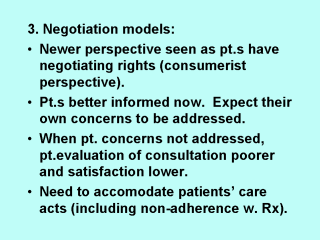 |
The most recent models reflect
the growing consumer orientation of health care, with patients being viewed as having
rights to fair and considerate treatment, to information and to consideration of their
needs. The principle motive for these models has come in the form of clinical audit and
the use of patient satisfaction measures. To evaluate outcomes by looking beyond the
limited endpoints of cure and morbidity rates has been the major shift in perspective of
the last decade of the 20th Century. Put simply, the
quality of the DPR has a direct impact on the extent to which patients make decisions
about service aspects, such as quality of care, and, while there is less evidence that
satisfaction is linked to improved compliance with treatment, the likelihood of patients
returning or of adverse reactions or problems is much higher. |
